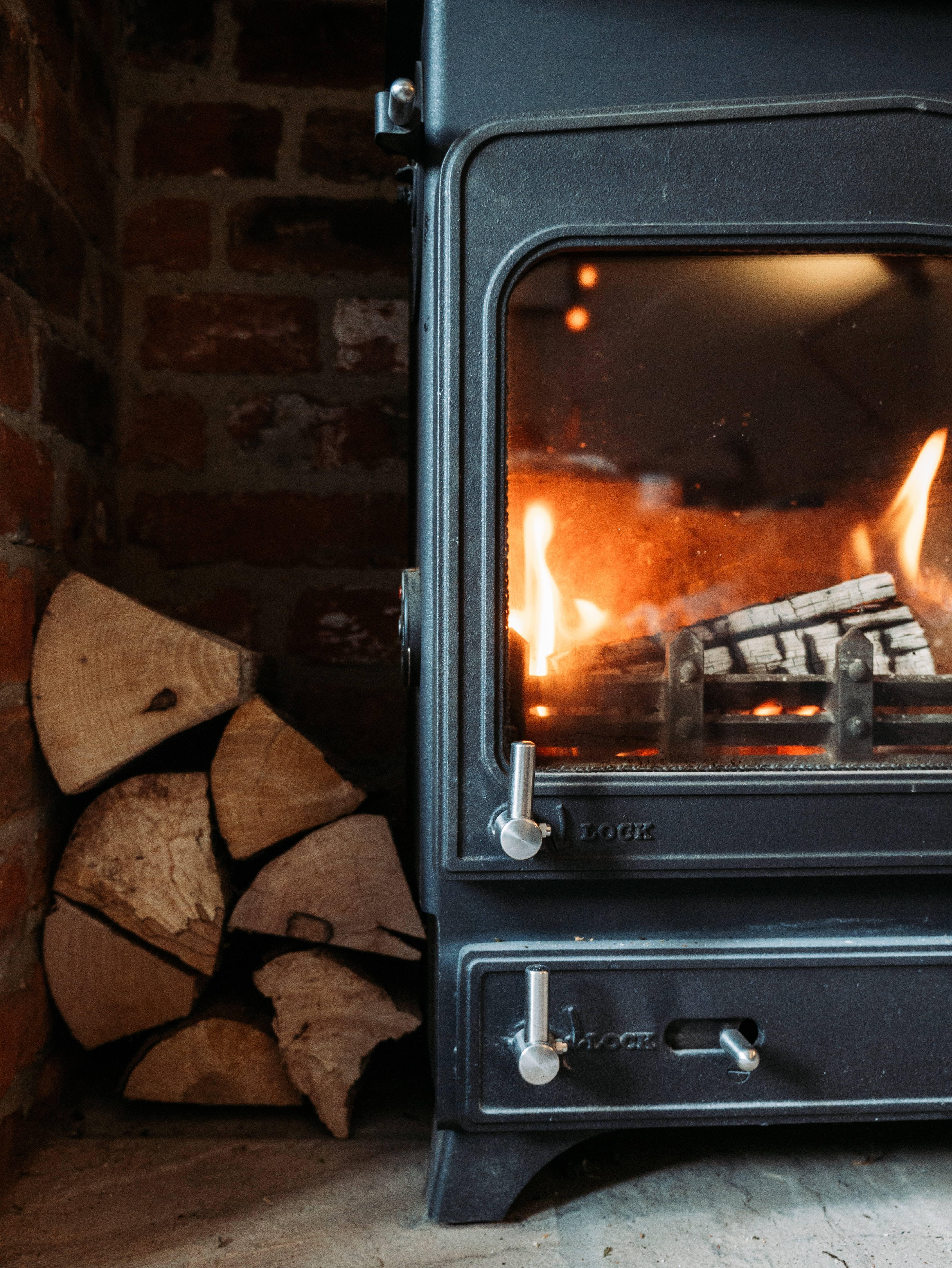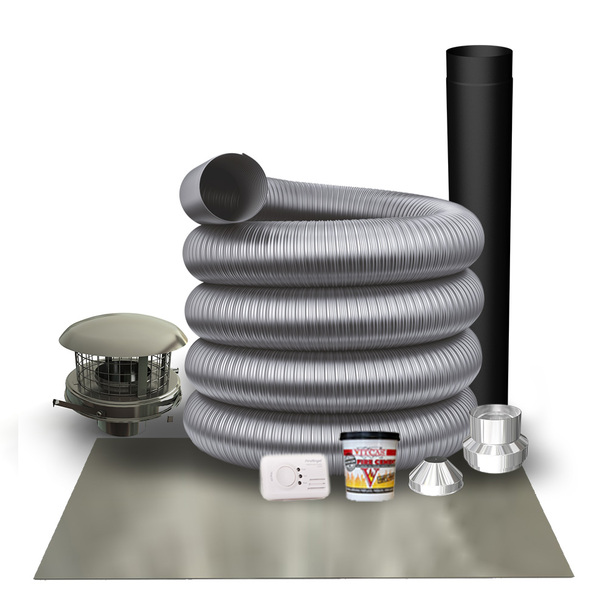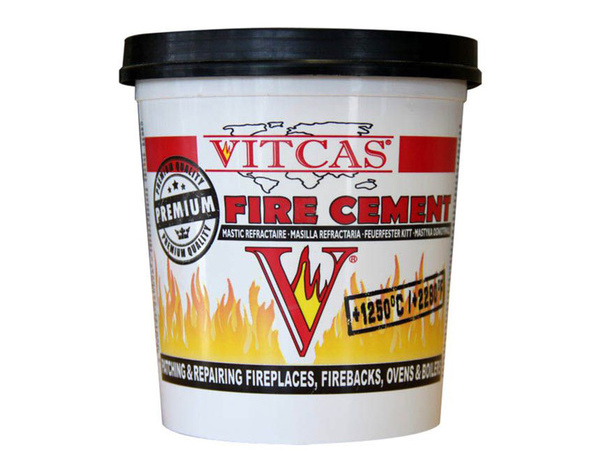Everything You Need to Know About Fire Cement
Whether you’re fitting a new stove or doing some work on a fireplace, flue or chimney, the chances are you may find yourself needing to use some fire cement. But, what exactly is it? What can you use it for? How do you use it? Keep reading and the team at Trade Price Flues will answer all of these questions and more in our complete guide to fire cement.
What is fire cement?
It’s cement that can be used near a fire, right?! Well, yes, but let’s take a look in a little more detail…
We’ll begin by defining exactly what we’re talking about. You see, fire cement is known by a plethora of different names:
> Heat cement
> Fireproof mortar
> Fire adhesive
> Fireplace plaster
> Stove cement
> Fireplace cement
And, probably a whole host of other names that we haven’t yet encountered.
Names aside, what exactly is fire cement?
Put simply, fire cement is a paste which turns rock hard when exposed to room or higher temperatures.
Commercially available fire cement, such as the cement we stock here at Trade Price Flues, is made up of a series of pre-mixed and ready to use thermosetting resins and inorganic fillers.
When applied to a high-temperature environment this mix of ‘ingredients’ heals and turns into a mortar, which in turn creates a seal - making it perfect for work on stoves, fireplaces, appliances, chimneys and flues.
Popular fire cements, such as those available from Vitcas, will be able to withstand temperatures up to 1250⁰C meaning they are ideal for domestic heating contexts.
What is the history of fire cement?
It’s believed that the formula for fire cement was first discovered in the late-nineteenth century when heating technology was beginning to advance beyond simple open fireplaces.
Builders at the time valued this new discovery due to its ability to quickly heal and form a heat-resistant seal. Since then, fire cement has been a regular feature of heating engineers and other tradesmens’ toolkits.
What are the benefits of using fire cement?
Commercially-available, pre-made fire cement has a number of benefits for both the average domestic user and tradesman alike:
> Convenience - you don’t have to worry about sourcing the various thermosetting resins and other ingredients and mixing them in the right way. You can get straight to work with ready-made fire cement.
> Effectiveness - fire cement is one of the most effective ways of creating exceptionally tight seals to stop smoke and other combustibles escaping.
> Heat resistance - fire cement will generally be suitable for use on even the hottest burning home stoves and appliances. Fire cements such as those from Vitcas can withstand temperatures of up to 1250⁰C.
> Easy to use - so long as you make the appropriate preparations, fire cement is easy to use and can be safely handled by domestic users and tradesmen.
> It can be used on any surface - fire cement will securely adhere to a wide range of services, including brick and stone, metallic surfaces and even ceramic type materials.
What do you use fire cement for?
When used regularly, stoves and other similar appliances have to withstand a large number of heat cycles i.e. they heat up and cool down on a regular basis.
Over time this can cause metal fatigue, with the fire box, stove collar or stove pipe degrading and/or cracking slightly. Whilst this won’t necessarily impair the function of the stove, it can lead to smoke leaking out of places it shouldn’t be.
That’s where fire cement comes in.
Fire cement can be quickly and easily applied over and around such cracks to form a solid seal and ensure the appliance stops leaking smoke and goes back to normal functionality.
But don’t think that fire cement is used solely on stoves. It’s used in a wide variety of other applications including:
> Fireplaces
> Gas cookers
> Boilers
> Central heating systems
> Ranges/AGAs
> And more…
Another common use of fire cements is on flue pipes, which we’ll cover next in more detail…

Using fire cement with flue pipes
If you’re using a stove in conjunction with a chimney flue liner then you’ll almost certainly need to use fire cement.
Why?
Because, in order to achieve a tight seal between the stove pipe and the flue liner, you’ll need to apply a film of fire cement. It’s also sometimes necessary to apply fire cement where the stove pipe connects to the stove collar (the circular outlet which is usually located on the top or rear of the stove’s firebox).
But, once you’ve successfully connected your flue pipe and flue liner together, keep a hold of your fire cement.
Why? Because occasionally fire cement can crack
Why does fire cement crack?
Because, over time the cement seal between the base of your flue pipe and the stove pipe can begin to crack and crumble.
This sometimes occurs because your stove will ‘rock’ slightly with the action of opening and closing the stove door. Over time this slight movement will cause the fire cement seal to crack.
Another reason fire cement cracks is due to the heat cycles which it, and the appliance it is applied to, goes through.
Every time a stove or other appliance is used it will expand as it heats up. As it cools down it contracts. This underlying contraction will, over time, undermine the fire cement and cause it to crack.
If you have an appliance which can be left to run continuously, this will help to prolong the life of any applied fire cement.
However, don’t worry if your fire cement does crack. Applying new fire cement is fairly easy, and we’ll tell you how to do just that next.

Shop Now - 5” - 6” 316 Super Flex Chimney Flue Liner Full Fitting Kit
How to re-seal the connection between your flue liner and stove pipe
If you find yourself in the situation outlined above, then don’t worry. Creating a new seal between your stove pipe and flue liner isn’t as difficult as you may think.
We’ve set out some basic instructions below.
Remove the existing fire cement
The first thing you’ll need to do is remove what remains of the existing fire cement that’s joining the stove pipe and flue liner together.
The easiest way of doing this is to use a flat head screwdriver to chip away at the cement. Use the cracks in the cement as leverage to begin prying it away.
When chipping away at the fire cement be extremely careful not to chip the vitreous enamel coating of the stove pipe underneath. Doing so will affect the integrity and lifespan of the stove pipe.
Note - wait until your stove has completely cooled before attempting to chip away the fire cement!
Clean around the connection
Once you’ve chipped away as much of the fire cement as you can, you need to clean up the connection between the stove pipe and the flue liner.
The best way to do this is to vacuum around the connection, taking care to capture any residual pieces of cement, dust and other pieces of detritus.
Once you’ve cleaned around the connection as much as you can it can be worthwhile grabbing both the flue liner and the stove pipe and giving them a bit of a ‘jiggle’ to dislodge any remaining fire cement.
When you’re satisfied that all remaining cement has been removed, you should give the connection between the stove pipe and the flue liner a thorough clean. Remove any dust, oils, grease or other contaminants which could interfere with the application of the new fire cement.
Apply the new fire cement
Now it’s time to apply the new fire cement. It’s recommended that you begin this process by placing masking tape around the top and bottom of the area you want to seal. This will create a clean straight edge around the seal and ensure the fire cement doesn’t spread in an unsightly way.
It’s then a case of applying the fire cement by hand around the area you want to seal. In most cases, the fire cement will resemble a sort of ‘putty’ and should therefore be easy to knead and push into place.
It’s highly recommended that you wear gloves when handling fire cement. It can also be handy to use a small trowel to apply the fire cement if you want to attain a very smooth finish.
Be careful not to apply too much fire cement though. Excessive fire cement, once hardened, will not only be unsightly, but difficult to remove.
Once the fire cement has dried you can remove the masking tape, revealing a nice, clean seal between the flue liner and stove pipe.
Note - it’s generally recommended that you leave freshly applied fire cement to dry and cure for at least 12 hours before using the stove/lighting a fire.
How long does fire cement take to dry?
You’ll note above that we’ve said it takes 12 hours for fire cement to dry and cure. Which is true. But, there’s a little more nuance that we’d like to explain on this point.
Once fire cement has been applied over cracks or to create a seal, you should wait at least an hour before doing anything else with it.
Once that hour mark has passed, you can then start to slowly heat the stove or other appliance that the fire cement has been applied to. The heat from the stove will gently begin to dry the cement.
Note that we use the words slowly and gently there...
You don’t want to set a roaring fire when you’ve only just applied fire cement. This could lead to the fire cement to cure improperly and crack.
Once you’ve lit the fire, you should keep it burning slowly and gently for two hours. This helps to evaporate the water in the heat cement and solidify it. Following this two hour burn, you should step up the fire to a medium to high setting for a further four to six hours.
Following this, allow for a further six hours for the fire cement to complete curing and hardening.
So, in total you’ll be looking at approximately 12 hours for your fire cement to dry if you follow the process outlined above.
Note - the information above is only a guide. The exact drying time of fire cement varies between different brands. Always read the instructions in full before using fire cement.
Where’s the best place to buy fire cement in the UK?
At Trade Price Flues of course! Seriously though, we are one of the UK’s leading suppliers of chimney flue liners, chimney accessories, stove accessories and much more. As such, we always have a good supply of high-quality fire cement to hand. Plus, many of our full flue liner fitting kits include fire cement as part of the package.
If you’re looking for fire cement for a project, then by far our most popular fire cement is Vitcas’.
Buy Vitcas fire cement today

Shop Now - Vitcas Fire Cement
Available in either black or grey and in a range of different sizes (500g tub, 1kg tub, 5kg tub, or 310ml cartridge), our Vitcas fire cement is capable of withstanding temperatures of up to 1250⁰C and is suitable for use on stoves, ovens, boilers, fireplaces, solid fuel ovens and other high-temperature applications.
Shop fire cement and silicone at Trade Price Flues now
For more flue, chimney and general home heating advice, explore the Trade Price Flues blog…
The Causes of Chimney Downdraft and How to Prevent It | A Complete Guide to Log Burner Flues | How to Connect Your Flue Liner to Your Stove Pipe
Latest Articles
-
Air Pollution Down in the UK Despite Record Wood Burner Sales
Great news! Wood-burning stoves, once considered environmental villains, have transformed into eco-f …18th Apr 2024 -
A Guide to Stove Installation in Lodges, Sheds, and Shepherd’s Huts
Shepherd’s huts, lodges, and sheds have become increasingly popular as charming retreats or alternat …25th Mar 2024 -
Pinned vs. Pinless Moisture Meters: Which is Best for Firewood?
When you collect or buy firewood, it usually starts very moist inside. Using sopping wet wood to bur …4th Mar 2024






